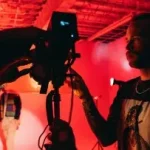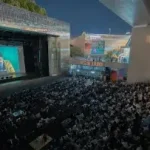Adapting a book into a screenplay may appear simple; simply take the story and compose it as a script, correct? Not exactly. Making a novel into a film, is a creative process that involves more than simply reproducing words. It is about translating a comprehensive, often internal narrative into a visual medium that has structure, rhythm and screen friendly sequences. Whether you’re adapting your own or someone else’s novel, there are several very important measures you can take to ensure success. Many popular films, including those exhibited at the Canberra Film Festival, began as novels. If you want to achieve that level of accomplishment, you must first grasp the adaption process.
- Understand the Core of the Story
The first step in adapting a book is identifying the heart of the story. Books often explore many subplots and characters, but films need a clear, central narrative. Ask yourself: what is this story really about? Who is the main character? What is their journey? Once you know the emotional core or main theme, you can build your screenplay around it. Focus on the key characters and plot points that drive this central message forward. You won’t be able to include everything, so choose wisely.
- Know the Differences Between Books and Films
Books are internal; they explore characters’ thoughts and feelings in depth. Films are external; they show actions, images, and dialogue. This means you’ll need to show, not tell. Instead of writing long internal monologues, think about how a character’s emotions can be shown through actions, expressions, and key scenes.
Also, books can be hundreds of pages long. Screenplays usually run between 90 to 120 pages, with lots of white space. Every page of a script is roughly one minute of screen time, so you’ll need to be selective and efficient.
- Break the Book Into Acts
A typical script has three acts: buildup, confrontation and resolution. Once you’ve discovered the book’s essential plot points organise them in this style. Your setup introduces the characters and world. The confrontation brings in the main conflict. The resolution wraps everything up. Some books are structured differently so you may need to reorganise events to fit this film structure. Be adaptable and inventive while remaining true to the plot.
- Trim the Fat and the Extras
Books can afford to wander a little. Screenplays can’t. You’ll need to cut characters, scenes, and subplots that don’t directly support the main storyline. Now this can be quite challenging, especially if you are a fan of the book, but it is very much necessary. Remember that what works in a book may slow down a film. Aim for a concise, focused script that keeps the audience interested from beginning to end.
- Create Strong Visual Moments
Film is a visual medium, so think in pictures. When writing your screenplay, imagine each scene as it would appear on screen. Replace internal descriptions with visual cues and actions. For example, instead of saying “she felt alone,” you might show her sitting at a dinner table with an empty chair opposite her. Moments that have strong visual or emotional impact stay with audiences, and they’re more likely to stand out at events like the Canberra Film Festival.
- Stay Legal and Respect the Source
If you’re adapting a book that you didn’t write, make sure you have the legal rights to do so. This includes optioning the book or getting permission from the author or publisher. Without this, you won’t be able to either sell or produce your script.
Even with permission, always respect the original material. While you’ll need to make changes, do your best to keep the tone, message, and characters true to the source. Fans of the book will notice and so will industry professionals at places like the Canberra Film Festival.
Conclusion
Adapting a book into a screenplay involves rethinking the work rather than replicating it. It requires ability, inventiveness, and a thorough understanding of both mediums. By focusing on the substance of the story, thinking visually, and embracing cinema form, you can develop a script that pays homage to the original while standing on its own. Take your time, learn the craft, and bring great stories to life in a whole new way.






